2017 Subaru Forester 2.5i Review

There’s no need to check the undercarriages of the countless Subaru Forester s on the road to conclude that few, if any, spend much time on the trail.
Like most of the rest of Subaru’s lineup, though, the Forester is ready, willing and able to have some fun off the beaten path. And so that’s where we fittingly find ourselves on our journey — off the beaten path. Actually, it’s the side of a winding dirt road somewhere near Crowsnest Pass, Alta., in the foothills of the Canadian Rockies.
ALSO SEE: 2017 Ford Escape Review
It’s raining, and yours truly is working quickly with a colleague to change the flat tire we’ve earned driving the 2017 Subaru Forester 2.5i. How exactly it happened is somewhat of a mystery. We can’t make out a puncture through all the mud, but the tire is losing air quickly, hissing incessantly like a prairie rattlesnake.
A Little Old, a Little New
The 2017 model year marks the 20th anniversary of the wagon-ish Forester’s introduction, and a fitting time to introduce a mid-cycle refresh. Minor tweaks to the exterior, including an updated front bumper on 2.5i models, a new grille, and LED daytime running lights and tail lights, give the Forester a refined look, while the interior gets an updated steering wheel design and available saddle brown upholstery. But the most notable addition for 2017 is the third-generation version of Subaru’s EyeSight driver assist suite, which has evolved into one of the most well-rounded safety packages on the non-premium market and now includes reverse automatic braking, steering responsive headlights and lane keep assist.
ALSO SEE: IBM’s Watson Could Help Subaru’s EyeSight Technology
The reverse automatic braking system works in the same manner as forward collision mitigation but is geared toward low-speed scenarios like backing out of a driveway or parking spot. Say, for example, a bicycle or garbage can is left at the bottom of the driveway. The system will alert the driver and, if nothing is done to avoid the obstruction, will intervene by applying the brakes to bring the Forester to a jarring halt.
FAST FACTS
| Engine: | 2.5L four-cylinder |
| Power: | 170 hp, 174 lb-ft |
| Transmission: | six-speed manual; CVT |
| EPA Fuel Economy: | 26 mpg city, 32 mpg hwy (CVT) |
| Can Fuel Economy: | 9.2 L/100 km city, 7.4 L/100 km hwy (CVT) |
| US Price: | Starts at $22,595 (before freight) |
| CAN Price: | Starts at $25,995 (before freight) |
Not much has changed elsewhere, with the same roomy interior and sizeable cargo area that offers 34.4 cu-ft with the rear seats upright and 74.7 cu-ft with them folded, the latter of which proves more than the larger Dodge Journey with both rows of rear seats folded.
Under the Forester’s hood lies the familiar choice of a pair of four-cylinder boxer engines depending on trim level — a naturally aspirated 2.5-liter in 2.5i models, like the one we’re driving, or a turbocharged 2.0-liter in 2.0XT models. The former makes 170 hp and 174 lb-ft of torque, and can be paired with the choice of six-speed manual gearbox or a reworked continuously variable transmission, while the latter makes 250 hp and 258 lb-ft of torque, but, sadly, only comes mated to a CVT.
Regardless of engine or transmission, all Foresters put power down through full-time all-wheel drive in typical Subaru fashion. And about that all-wheel drive…
Off-road Prowess
It’s unlikely the average Forester owner is going to venture off into the woods in their daily-driven family hauler. But unlike the competition, the Forester is more than happy to oblige should the occasion arise. And it’s one of those occasions that brings us back to our story, before flat tires and soupy roads.
We’re at the base of a 7,100-ft mountain, and we’ve discovered a proverbial off-road playground. Rocks abound here, the stuff that Jeep owners’ dreams are made of, and a dirt track that appears to snake its way toward a shallow stream. We start with the rocks, working our way around with ease, not avoiding but rather searching for bigger and better obstacles.
Like its stablemates, the Forester’s long and low snout means strategic approaches to avoid damage, but its 8.7 inches of ground clearance are confidence-inspiring, leaving basketball-sized boulders in the rearview. Whether ascending or descending stoney, grassy or muddy hills, the Forester’s X-mode comes in handy for even the most experienced off-road driver, controlling brake, accelerator and center differential clutch force to handle the job with little human input — no need to touch the pedals.
ALSO SEE: 2016 Jeep Renegade vs 2016 Subaru Crosstrek
Push the Forester to the limit, and it just keeps coming back for more. Take something you think the Forester can’t do — driving through a shallow river, for example — and it handles it with ease. Put a set of aggressive tires on the Forester, and it’s easy to imagine how much more capable it would be.
On-road Poise
As great as the Forester is off the road, it’s equally adept on it. Somehow, some way, the Forester is more sedan than sport ute when it’s back on the asphalt. It’s not overly tippy, and the chassis and suspension are responsive and on-point, and the steering is nicely weighted and doesn’t feel loose and floaty.
With the 2.5-liter engine under the hood and the CVT pushing power around, the Forester handles passing maneuvers with ease, and doesn’t suffer from much of the rubberiness typical of continuously variable transmissions.
It’s also an economical combination. Over the course of more than 300 miles of driving on just about every terrain imaginable, we averaged somewhere in the neighborhood of 26 mpg — just slightly off the pace of the combined EPA fuel economy rating of 28 mpg. Spend a little more time on the highway and a little less on the trail and the Forester could easily exceed what the sticker says.
Subaru has also added loads of undercarriage and body panel insulation, as well as thicker glass, to reduce cabin noise to a negligible amount. It’s impressively quiet despite the the full-time all-wheel drive.
About the only complaints while driving relate to the tall front seats, which make it feel like both driver and passenger are sitting on stacks of phone books, and the location of the rearview mirror, which is mounted low on the windshield to accommodate the front EyeSight cameras, creating a rather large and awkward blind spot for taller drivers. The lane keep assist system can also be a little like bowling with only one gutter bumper, correcting the steering away from the lane markings on one side of the vehicle but pushing it towards the other without correcting itself.
The Verdict: 2017 Subaru Forester 2.5i Review
Replacing the factory-fitted 225/55/R18 all-season with the unnervingly narrow spare takes mere minutes before we’re back on the twisty, washed-out, rutted road we were navigating. Steady rainfall has left the surface looking and feeling like the bottom of a cup of instant coffee, a real momentum-killer should your foot come off the accelerator for even just a second or two. But we press on, determined to make it to the bottom — or is it the top? — of what seems like a never-ending hill that carves its way up and down, back and forth through the woods, until we emerge unscathed, the Forester caked in celebratory mud.
There isn’t a vehicle I would have rather taken on our journey.
LOVE IT
- Go-anywhere ability
- Refined continuously-variable transmission
- Cabin quietness
LEAVE IT
- Lane keep assist
- Awkward location of rearview mirror
- High seating position

Dan is AutoGuide.com's Road Test Editor, a long-suffering Buffalo Bills fan, and a car guy since childhood. He enjoys long walks on the beach and long drives just about anywhere the road, track or trail will take him. You'll see him driving around evaluating cars and in front of a camera talking about them. Dan is a member of the World Car of the Year jury.
More by Dan Ilika



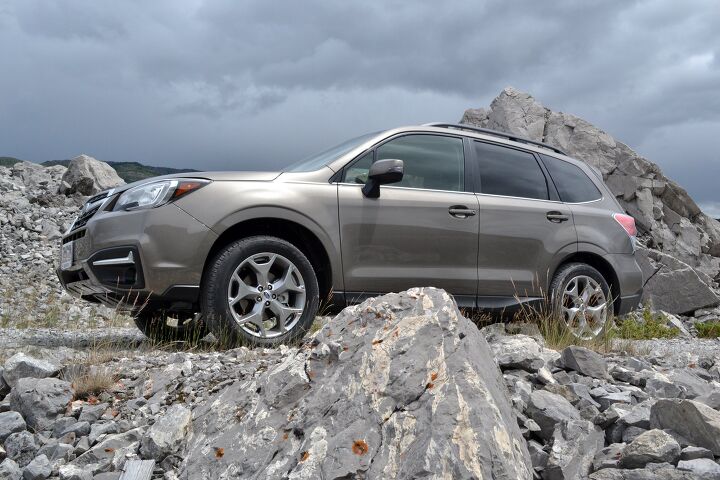


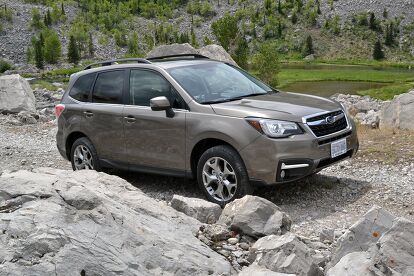













































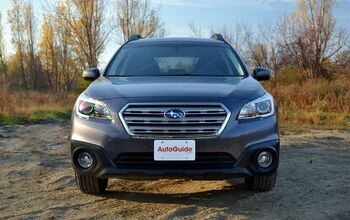

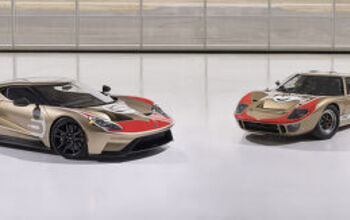
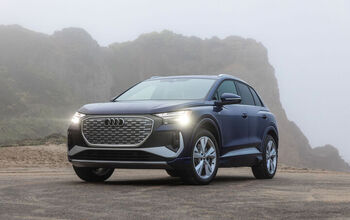
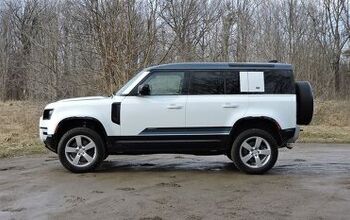
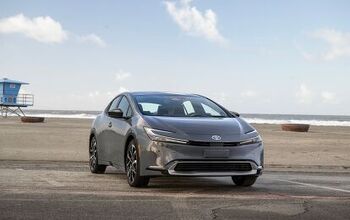
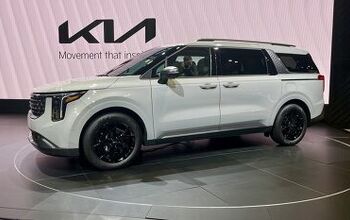


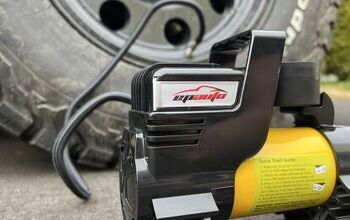
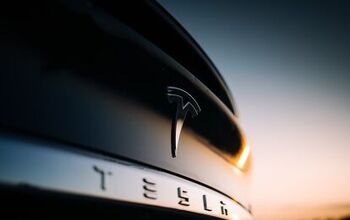
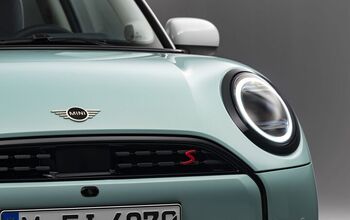
Comments
Join the conversation
Leased my second Subaru in two months, a 2017 Outback Limited and a Forester Premium . Have taken both on long trips, 300 miles plus. Best two cars we have ever driven.
I wonder why the forester does not have a temp gauge just a idiot light.....